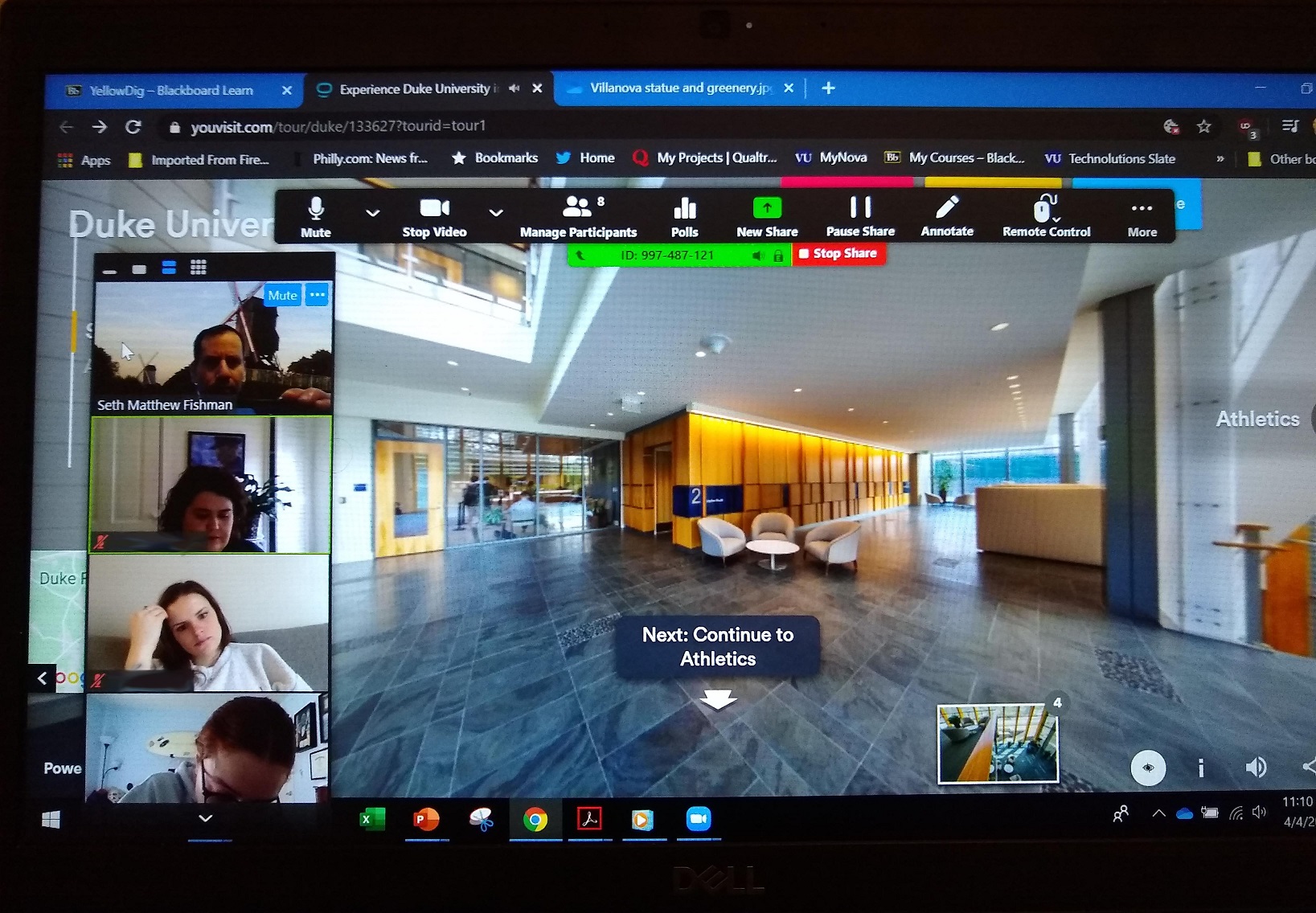Villanova Professor Adapts Course on Campus Physical Environments to an Online Format

Dr. Seth Matthew Fishman's Campus Physical Enviroments class has been exploring campus environments together online, viewing virtual tours and looking at ways in which physical space promotes engagement and student learning.
Due to the coronavirus pandemic, college and university classes across the country have been forced to move online. For Dr. Seth Matthew Fishman’s Campus Physical Environments course, there is quite a bit of irony in that.
Fishman’s class is part of a series of 1-credit special topics courses designed for graduate students pursuing future careers in higher education and education leadership. The applied theory workshop, which introduces students to the topic of higher education physical environments and student usage, is set up to be condensed over one weekend on campus – with students submitting a final project at a later date.
With the class moving to an online format, Fishman saw potential benefits for altering the traditional course timeline. He decided to conduct half of the class through online Zoom sessions over the originally scheduled weekend and then spread the remainder of the course over three weeks – giving the students more time to process the course content.
“There is definitely irony in having to move a course about campus physical environments online,” said Fishman, who in addition to his assistant professor role in the Department of Education and Counseling, also serves as Assistant Dean of Curriculum and Assessment in Villanova’s College of Liberal Arts and Sciences. “One of the hallmarks of the class is a long tour of campus, where we examine the various physical environments that make up a college campus. The move to online took that option away and I had to completely change the syllabus. The beauty of the internet is the resources we have available, including virtual college tours, online videos and articles on campus renovations.”
Despite the move to an online format, the objectives of the course remained the same: to convey the role of place and design in campus physical spaces; to demonstrate ways to improve human interactions and academic learning through physical environments; and, to design basic small-scale spatial renovation to improve usage.
As a pre-assignment, students chose and submitted a specific college virtual tour based upon the context of their initial class readings. These tours were used by Fishman as the starting point to discuss the concepts of the course.
Since that time, the class has been virtually exploring campus environments, looking at ways in which physical space promotes engagement and student learning. Issues such as sustainability and diversity and inclusion are key topics integrated in the workshop.
“I restructured our course to last the whole month, with two on-line Zoom sessions where we watched and examined campus virtual tours together,” Fishman added. “I designed the rest of the course using asynchronous activity, which includes use of a tool called YellowDig within Blackboard.” Using YellowDig, Fishman posts different materials – such as articles, pictures, and videos – each Monday for student response.
The course ends with a final project called the “Redesign Challenge.” Fishman tasks his students with redesigning an existing campus space – at an institution of their choice that they have either visited in person or virtually – with a budget of $25,000. The goal of the project is for students to redesign a space to improve student interaction and engagement. Students can submit a paper, or video, which includes a description of the project, details of the design and its objectives, and the budget for the project.
“I am open to ALL creative ideas,” notes Fishman. “Student have carte blanche to try something new, inventive, and outside of their normal paper protocol provided they demonstrate application of the course learning. Students have come up with some excellent and creative ideas in the past, including redesigned gathering spaces, outdoor patios and a test kitchen laboratory that could be used for classes and co-curricular events focused on food and culture.”
